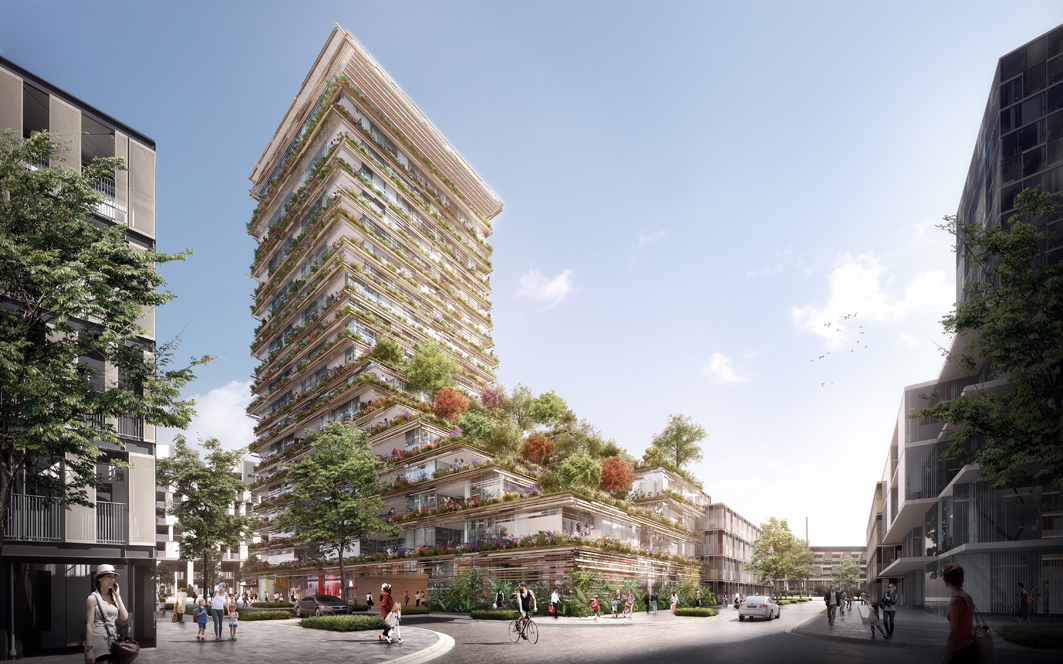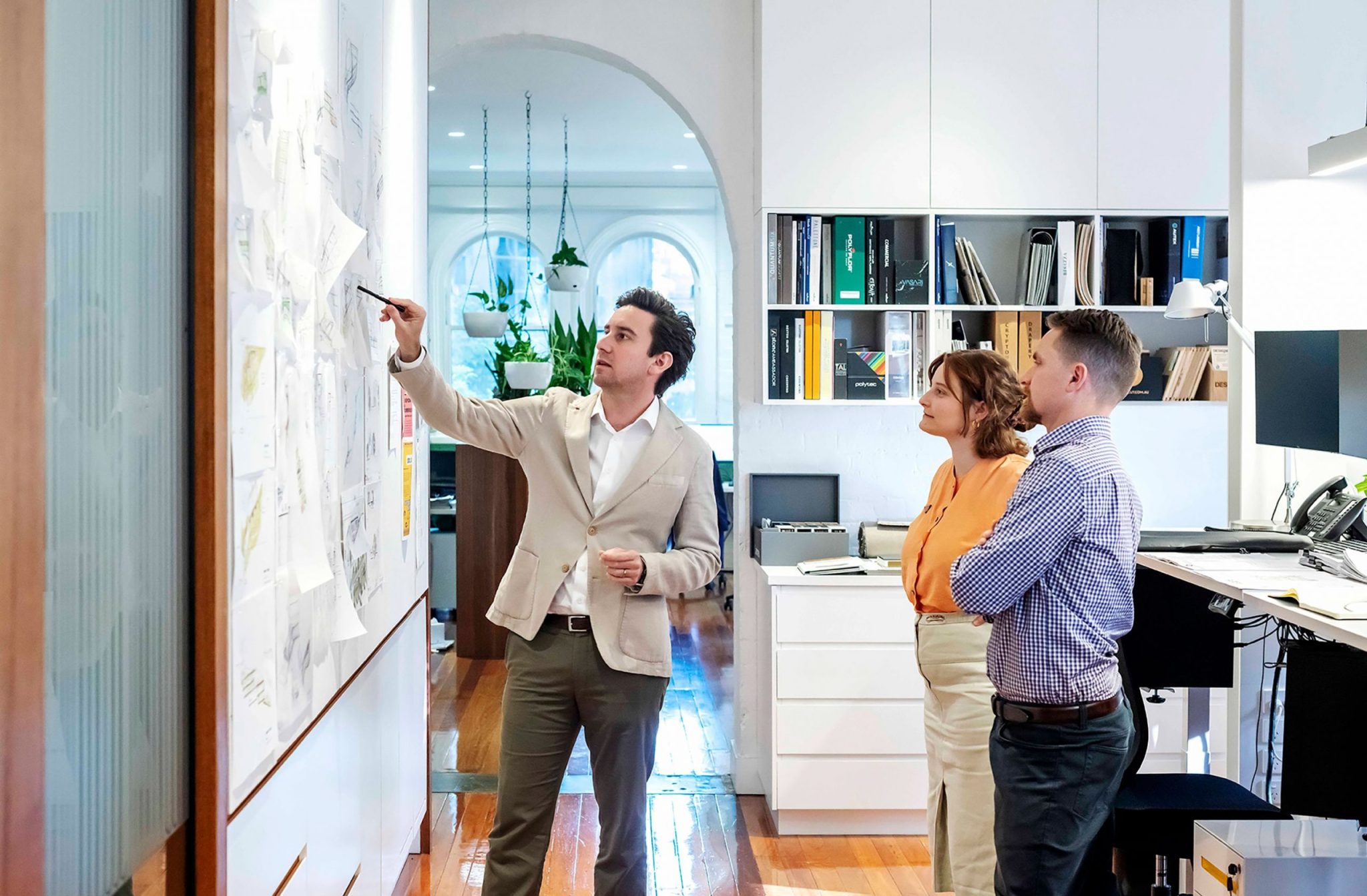
A wake-up call for client and architect
A wake-up call for client and architect
Share
Former US President George H.W. Bush may have disparaged the vision thing, but, without that ingredient, little of consequence will be built. How to achieve the final product says a lot about the relationship between the client as the main stakeholder and the architect.
Promotion of Mastery, the latest Sydney project from the Crown Group, played unmercifully on its name. Bamboo forests and Japanese temple walkways set the mood in the teaser video, but the significant legacy Crown is confident the five buildings will leave is the result of a “meeting of minds” of “masters at the top of their game”.
The ‘great coup’ is to have the Tokyo-based Kengo Kuma and Tokyo-born, Sydney-based architect Koichi Takada collaborating on the 20-storey Building C, a trademark theme of which is the connection of nature to residents. The distinctive plant-filled, green exterior described as being “designed to emulate a stacked forest”, exemplifies one of Kuma’s central beliefs – that “good architecture does not attempt to fix nature – instead, it moves with nature, always continuing the dialogue”.
The other four buildings (three from Takada and a residential tower from Australian firm Silvester Fuller) consolidate the design impetus behind Mastery. Admiration and respect for visionary buildings is central to Crown’s reputation, often in emerging suburbs (such as here, in the previously industrial Waterloo), or new precincts like Green Square).
Crown chief executive officer and co-founder, Iwan Sunito, says his philosophy from the start has been: “Do I cut the building, make it cheap, make it ugly or build the most wonderful buildings in that area? I realised that architecture has power to move people.”
This is matched by the commercial nous of marketing the ‘unique vision’ and ‘genius’ of his chosen architects. Sunito also has a strong vision. When asked how important it is to negotiate and convince the architect about one’s vision, he is firm. “I do not negotiate with them,” he says. He chooses “super smart” architects. “If they are right and clever, I will listen to them. No one can deny a good idea or a great architect.
They must also have been proven in creating a vision that people have not seen yet. A Crown building cannot be the old thing. It gets boring, so you have to create a new song.” At its most profound, there is a symbiotic relationship between client and architect, and mutual respect.
For Takada, “Iwan has been one of the great clients, in terms of letting us do what we believe in. We don’t argue much [but] we do push each other.”
“I design from scratch with each project. I create architecture in an organic sense. I believe in naturalising our city, so greening architecture is a very important part of our design approach. Clients come on board knowing that this is what we do. They only use you because they know your background. They come to us more often because they want the point of difference, something new. They are sick of getting the boxes from other architects.”
Annie Tennant, general manager, Sustainability and Culture, Barangaroo South at Lendlease, an architect by education and training, knows exactly what she appreciates as a client. “I like to have a consultant interrogate the brief, so they can come back to me and ask, ‘When you say this, do you mean this or this?’ I want them to try to understand our vision. I used to be a little disparaging of people with no design training, but I am finding that maybe we should not be so precious. There are quite a lot of people with experience in the field and they understand a lot of the issues very clearly.”
Tennant has “noticed some architects can get on their high horse about developers, but the reality is that projects do need to make money”.
“Lendlease invests in many social programs, including our Barangaro South Skills Exchange, in partnership with TAFE. It provides on-site education for our construction workers.” Is there a communication style she favours?
“I appreciate openness. I have learned that some people ask a question in a black-and-white way and that gets you nowhere. Questions need to be asked in a way that uncovers things. For example, asking whether a certain rating is required, and the answer may be no. But if the question is, what are the benefits of achieving x rating or what are the disadvantages, you will get a nuanced answer, such as politically this is a good thing to do, but financially it is going to be difficult. However, it may make a positive impact, so we will do it.”

Building C – Mastery by Crown Group. Image courtesy of Koichi Takada Architects
Lendlease, as the client, is often the leader in defining a project’s purpose, she says. “We are pushing social and environmental sustainability much more strongly than our consultants. I am still the one constantly saying it is important to consider people with disabilities. For example, we instigated a review of the public domain of Barangaroo South through the lens of how to make it the most inclusive public domain. We pulled together a panel of people with a range of disabilities and have them review our public domain.
“The reality also is that business is leading the way in battling climate change. (The Barangaroo website states that it ‘aims be the first precinct globally to be carbon neutral’.) You can’t recreate great places if they are not responsive and responsible. Energy efficiency, biophilia, health and well-being, sustainable materials and products and social products programs are at the core of what we are doing, and we are putting quite solid budgets towards them.”
The delivery of a vision is often spearheaded by project managers. At Lendlease, Tennant is “in development and we work closely with Lendlease project managers (PMs). We bring a cohesive team to our projects. If you give the PMs a brief, make it inclusive and aspirational. It comes down to what you are asking them to do. When people are able to question things, they can add a different lens to the development of the brief.
“We always look at where consultants are collaborative,” Tennant says. “We look at their relationships and think about what kind of work they do and is that the kind of thing we are trying to create. There are certain consultants that you like to work with again and again and there are others that you don’t. You may not gel with them, but they may gel with someone else.”
The Crown Group also has its own project manager. “A project manager that is cost and product conscious and understands how to deliver a quality building is important for us,” Sunito says.
“They deliver the vision and expand it.” Phuong Le, Project Management | Global Workplace Solutions at CBRE, has no doubt as to where project managers fit in. “Project managers are often the first team to be on-boarded by the client, as we provide insight and advice on the whole design and development process, from end-to-end,” she says.
“The project manager is the reliable adviser to the client and brings together designers, engineers, consultants and builders who will be the best fit for the project.” A successful project, she says, “starts with the client”. While the client needs to be open to innovation and trust the project team to do their job, “the best strategies have been where the design presented strongly aligns with the client’s goals and vision”.
“The designs need to emote a connection within the client, which clearly presents what the business desires, their brand, or their future goals,” she adds. “Upon achieving this connection, clients will often take on-board the design and advocate for it and this is where the best outcomes are achieved.”
Le believes that her background as a trained architect, who has also worked for a head contractor/builder, is an advantage. “It gives me insight into options to minimise the cost of construction (value engineering), while also being aware of the design elements that need to be retained to maintain the design integrity and initial concept.
“Misalignments in visions generally result from misinterpretations or miscommunication, and need to be resolved urgently to ensure the project can progress in a timely manner. Project managers help ensure communication flows within the team, to drive the project, to resolve issues and recommend a path forward from options provided by the project team.”
To feel confident in his choices, Crown’s Iwan Sunito relies on what he calls the ‘three Cs’: “Chemistry first, I don’t work with anyone I don’t like,” he says, then character, having “resilience and humility, [being] stubborn yet humble enough to listen but strong enough to say ‘no, it won’t work’.
The third is capacity: “They have to be skilful in what they are doing and do it well.” He also has another tenet. “People do not buy a building because of the product, they buy it because of its SPACE motivation (namely) security, prestige, appearance, convenience and ego. I want the most iconic building, one that is not just successful, but also one that is significant, that has a legacy.”
And he wants the architects who can achieve this vision.
This article originally appeared in AR158 – available online and digitally through Zinio.
Image credit: 123rf’s Kittisak Jirasittichai ©123rf.com

















